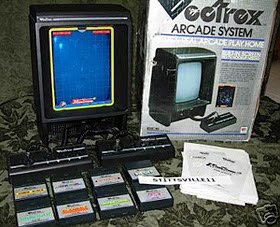I guess you could say I’m like that with games. I remember getting my first console - the handheld gem, GAMEboy - with pokemon yellow, and thinking I was the coolest thing ever, because I had a pokemon game. I was ten, and doing my SATs, and I remember putting off studying just to play, and was the first game that I’d completed properly (because playing Ocarina of Time on the N64 at my mates, doesn’t count in the slightest). Unfortunately, Pokemon was a craze that would continue on with me.
I got Pokemon Gold in 2001, and was fearful to open it because it was shiny and I didn’t want to spoil it. It was eventually my cousin who clipped me about the head saying: “What’s the point of having it if you’re not going to play it? Besides, I have silver and want someone to trade with.” I remember being so impressed by the fact that it wasn’t monochromatic - I practically danced. And that your Pokemon actually had a gender!? My gosh, golly, gee whiz! It was awesome - ah the simpler times, when we were all so much easier to please.
The last thing I got for the game boy (which still, to this day, rests in my wardrobe, god bless its weary soul) was Legend of Zelda: Oracle of Seasons, later that same year. I played it once, and have been unable to since. I’m not sure why. It could have been something to do with awkward controls. I was never really fond of the game to be honest. But it was a Zelda, and therefore deserved some kind of honorary play through - even if its now serving as a dust collector.
I think I was fourteen (probably younger) when I got my PlayStation 2, my mum had me do a treasure hunt, finding clues around the house to track it down. I loved it. I just didn’t know what to play on it - I hadn’t discovered final fantasy yet - and so my dad ended up using it more than me. Now its rare if you see the controller leave my hands (as I type, I’m playing Kingdom Hearts 2 one handed).
When I was sixteen we moved to Canada, and this is where the fun began. My animation peers took me under their wing, as the youngling of the class, taking it upon themselves to teach me all they knew of everything to do with geek-dom. I, of course, didn’t protest. Within the space of three years, I’d worked my way through three Final Fantasy’s, five Zelda games, a slew of Mario games, All the Kingdom Hearts games (apart from final mixes), and had become a pro in Super Smash Brothers Melee, and powned all as Link in Soul Calibur. I’d also decided, without a doubt, that I wanted to work in games, and gained a PS3.
The best, and first, Final Fantasy that I worked my way through was Final Fantasy XII - Balthier is one of the best characters I have ever encountered in a game, and the story line is fantastic. The only complaint I had was that it wasn’t long enough.
Ah, and I remember trolling up and down Windsor high street, and Devonshire Mall, looking for a copy of Legend of Zelda: Twilight Princess, only to break my arm before the last boss. Thusly Ganondorf was defeated using only one hand. This is not easy.
 On returning to England, I bought a PSP (purely for Dissidia: Final Fantasy, only to fall in love with Final Fantasy VII: Crisis Core), and play it religiously to this day, along with my borrowed DS (I love you mum!).
On returning to England, I bought a PSP (purely for Dissidia: Final Fantasy, only to fall in love with Final Fantasy VII: Crisis Core), and play it religiously to this day, along with my borrowed DS (I love you mum!).
Which.. Pretty much brings us up to date, as I play through Ookami, one of the best 2D-effect games I have ever played. It’s innovative, involving, and aesthetically beautiful. I’m also playing FFXII for the twenty-fifth time, Kingdom Hearts II, and Kingdom Hearts: Birth By Sleep. Oh - and mustn’t forget Dragon Age: Origins, a game that I’m giving a second chance to win me over.
And As this post is now over seven hundred words, I’ll take my leave, and bid you adieu, auf wiedersehen, and good night.
 This era (one I am very familiar with) was dominated by the console - Sony, Nintendo, and, new to the market, Microsoft, duked it out becoming the big three of gaming. It also saw the rise of the hand held console. The GameBoy, evolved, transforming into the GameBoy Colour, the GameBoy advance, until it reached the DS level. Along side it, we saw the birth of Sony’s PSP.
This era (one I am very familiar with) was dominated by the console - Sony, Nintendo, and, new to the market, Microsoft, duked it out becoming the big three of gaming. It also saw the rise of the hand held console. The GameBoy, evolved, transforming into the GameBoy Colour, the GameBoy advance, until it reached the DS level. Along side it, we saw the birth of Sony’s PSP.



